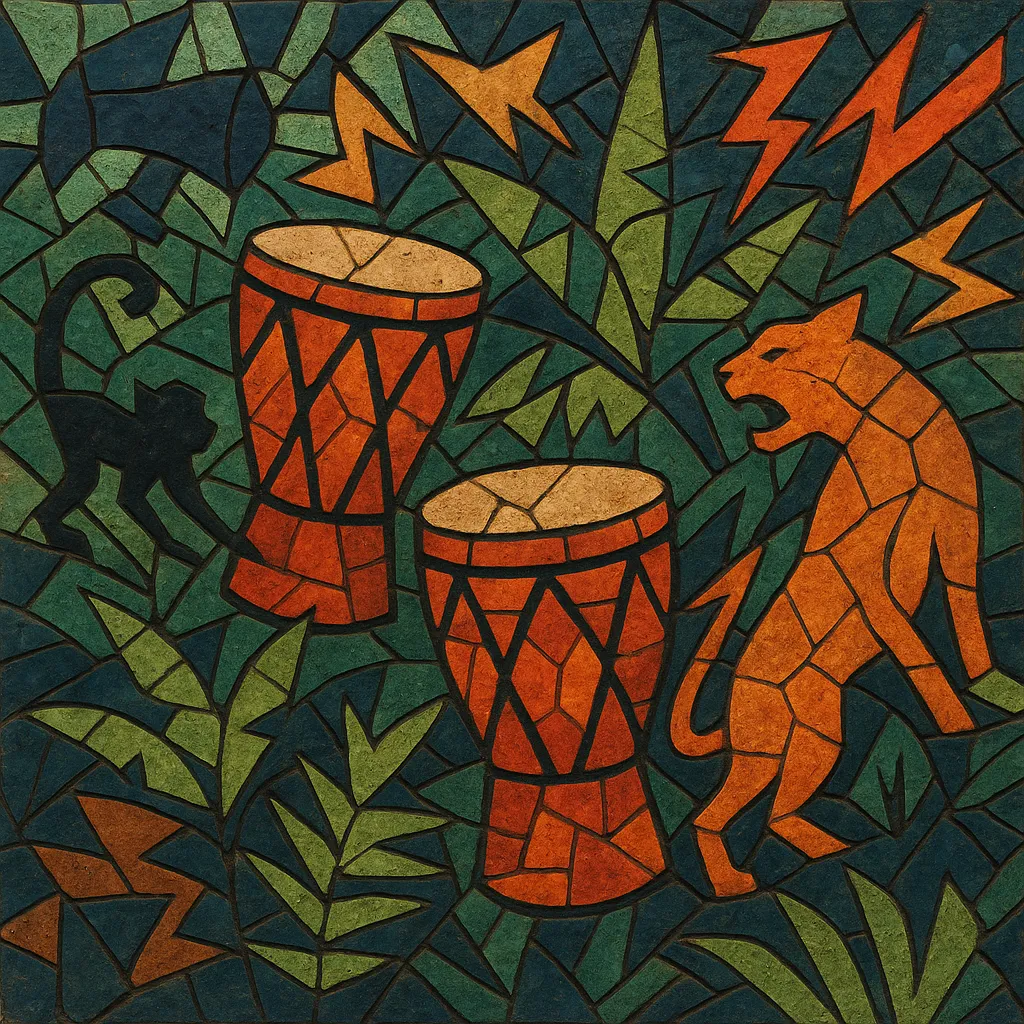Jungle dutch is a high-energy, percussion‑driven offshoot of Dutch house that emphasizes tom-heavy drum patterns, jungle/tribal sound design, and stark, stop‑and‑go drops. Typically sitting around 126–132 BPM, it keeps the four‑on‑the‑floor drive of electro and Dutch house while swapping typical saw or supersaw leads for battery‑like taiko/tom riffs, animal/foliage foley, air horns, and short, metallic stabs.
The style favors negative space and rhythmic call‑and‑response: dense drum barrages are punctuated by brief silences, snappy fills, and explosive hits. Sound palettes often nod to “jungle” atmospheres without borrowing jungle (drum & bass) tempos, yielding a club‑focused, festival‑ready aesthetic that is both aggressive and irresistibly dancing.
Jungle dutch emerged in the Netherlands in the early 2010s as Dutch house (often called "Dirty Dutch") was peaking in club and festival circuits. Producers began pushing the style’s percussive edge, exchanging bright lead riffs for tom‑led motifs, horn stabs, chant one‑shots, and jungle/tribal foley. The Dutch festival ecosystem and club culture provided the perfect laboratory for this harder, drum‑first variant.
As the sound solidified, a handful of Dutch and Dutch‑connected artists popularized the blueprint: 128 BPM four‑on‑the‑floor, syncopated tom patterns, stripped bass lines, and dramatic stop‑and‑go drops. Labels and party brands associated with Dutch house helped the sound reach international stages, while online communities began tagging tracks as “jungle dutch,” paving the way for a shared vocabulary.
By the mid‑2010s, the style’s kinetic drops and distinctive percussion translated well to large rooms and festival main stages. Collabs and remixes with big‑room and electro house acts amplified its reach beyond the Netherlands to North America, Latin America, and Asia.
As the sound matured, many artists and fans increasingly used the term “jungle terror” for even more extreme versions of the same idea—heavier drums, rawer foley, and more aggressive edits. Jungle dutch is thus best understood as a Dutch house‑rooted, tribal‑percussion phase whose DNA directly seeded the broader and louder jungle terror wave.


